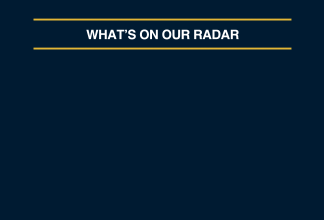How Building a Gingerbread House is Similar to Crafting Your Portfolio
Written by Bonnie Schiedel
Published on December 19, 2017
minute read
Share:
Bedecked with candy and icing, each one unique, classic gingerbread houses are a fun tradition for many during the holiday season. Making one can take planning, time, creativity and a certain amount of skill to get the result you want. Building that sweet structure is quite a lot like building an investment portfolio. True, a gingerbread house is a short-term project and an investment portfolio usually requires a longer view, but we've found five key steps to keep in mind whether building the perfect gingerbread house or a portfolio housing all your needs.
1. Understand the "Why"
Is building your gingerbread house an annual tradition that you want to improve upon every year? Or does it have a specific aim, like keeping the kids' table entertained or raising money for a philanthropic project? Knowing why you're building — whether it's a house or a portfolio — is key. It helps you visualize your goals, and perhaps as importantly, figure out how much work and time it will take to get there.
2. Find Your Starting Point
You're building your gingerbread house yourself rather than buying it from a bakery for a reason. Maybe you know you want it done a particular way, you enjoy doing it on your own, or you want to save on costs. Like with a portfolio, what you build depends on your comfort level with risk. Are you aiming for an elaborate castle and medieval town right off the bat, or starting with a simple cottage? Starting with a gingerbread Eiffel Tower could draw oohs and ahs, but might also topple. Building an investment portfolio takes similar care and self-knowledge, understanding what type of investor you are and your risk comfort levels.
3. Craft Your Plan
Repeatedly going to the store for supplies, running out of items, using ingredients in the wrong order, frequently changing your mind about what you want to create? Sounds like a recipe for a rough gingerbread-building experience. Solid portfolios can take good planning, which means in part truly understanding the mix of investments and types of accounts you need to get you where you want to go and how much time you've got to get there.
4. Know Your Ingredients
The right balance of ingredients — whether building a gingerbread house or portfolio — can make a difference. It's also a personal choice. Some choose to stick to dependable classics (think royal icing and gumdrops), while others mix things up with sprinklings of more exotic candies or luxury items like gold leaf.
5. Have Patience
Constantly picking away at your gingerbread house by changing the candy design or structure means you could end up with a building that's a bit rickety and unpolished. Once you've come up with your design and crafted your masterpiece, you might want to sit back and enjoy it for the season. If you've followed your plan for a portfolio, understanding your needs and comfort levels, then you can focus on your strategy rather than the things you can't control...like market movements.
Bottom line: Whether you're crafting a gingerbread house that will stand for a few weeks or an investment portfolio that will last for years, planning can be the key to a solid foundation. And revisiting those plans as you go — learning from past experience and reevaluating your current situation— can keep you moving forward.
*The title of this article was updated December 12, 2018
RBC Direct Investing Inc. and Royal Bank of Canada are separate corporate entities which are affiliated. RBC Direct Investing Inc. is a wholly owned subsidiary of Royal Bank of Canada and is a Member of the Investment Industry Regulatory Organization of Canada and the Canadian Investor Protection Fund. Royal Bank of Canada and certain of its issuers are related to RBC Direct Investing Inc. RBC Direct Investing Inc. does not provide investment advice or recommendations regarding the purchase or sale of any securities. Investors are responsible for their own investment decisions. RBC Direct Investing is a business name used by RBC Direct Investing Inc. ® / ™ Trademark(s) of Royal Bank of Canada. RBC and Royal Bank are registered trademarks of Royal Bank of Canada. Used under licence.
© Royal Bank of Canada 2018. All rights reserved.
The views and opinions expressed in this publication are for your general interest and do not necessarily reflect the views and opinions of RBC Direct Investing. Furthermore, the products, services and securities referred to in this publication are only available in Canada and other jurisdictions where they may be legally offered for sale. If you are not currently resident of Canada, you should not access the information available on the RBC Direct Investing website.
Explore More

Here’s What Every Canadian Should Know About Estate Planning
Insights from Leanne Kaufman to help you feel more confident as you plan
minute read

3 Things We're Watching This Week
What the Inspired Investor team is watching
minute read

What’s Driving the Recent Surge in Gold Prices
Here are some things to watch with the gold market
minute read
Inspired Investor brings you personal stories, timely information and expert insights to empower your investment decisions. Visit About Us to find out more.







